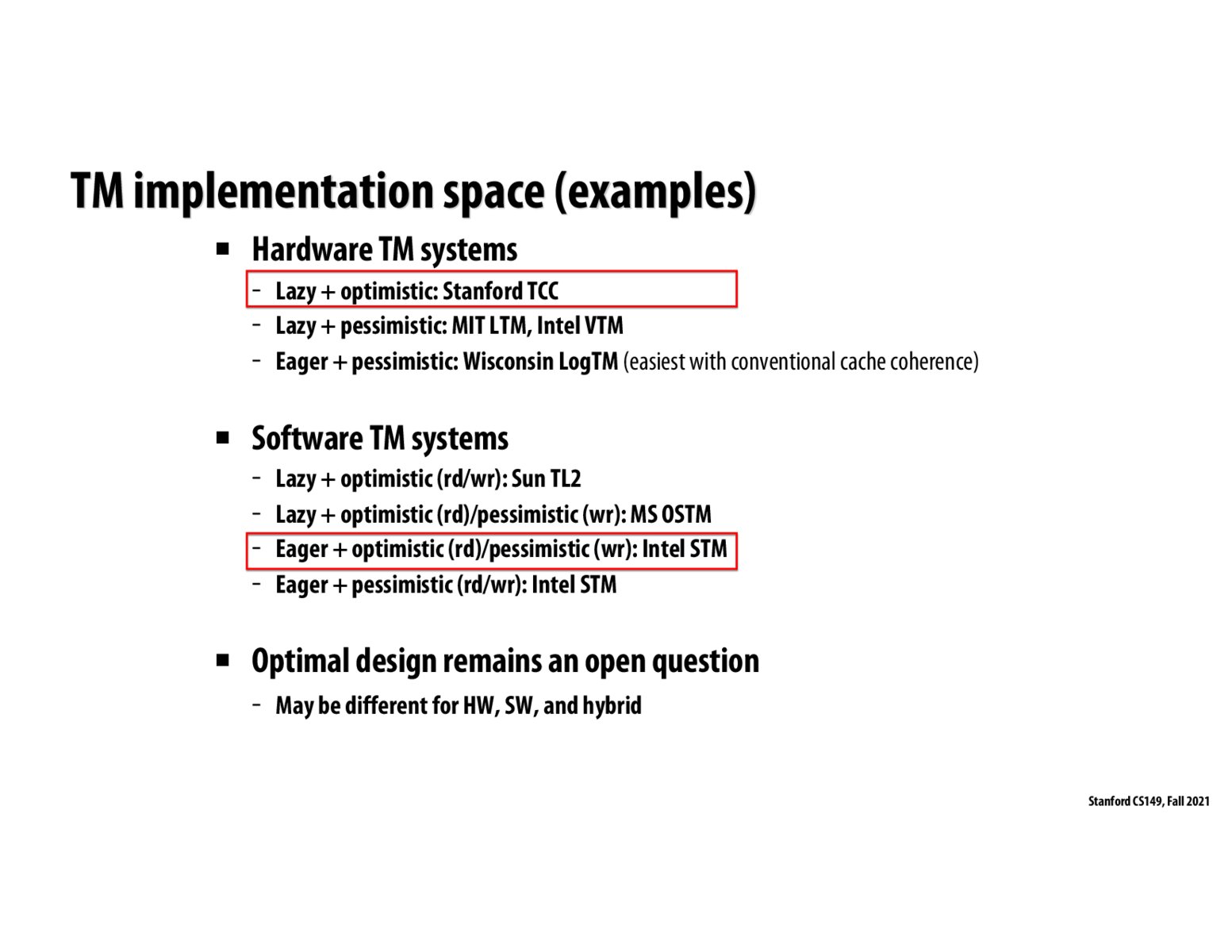


This is a really good example of the design decisions we've been learning about being useful: there's no best implementation even for something as low-level as transactional memory, so the system you're working on might change and it's important for the programmer to understand the strengths and weaknesses of their memory system.

I am wondering what is the current state of hardware TM systems? Are they now widely implemented in common architectures, or are they only implemented in specialized hardware that is designed to run programs that require atomicity?

I am wondering, since there are hardware TM systems and software TM systems, how important is it to check that both are compatible, and if they aren't compatible, how can we "toggle" only one to be effective? In other words, do we need to be very cognizant of what hardware TM systems are in place when writing software for many different types of machines?
Please log in to leave a comment.
What hybrid conflict detection schemes mean: As in the case of Intel's STM, when your reads are optimistic, they do not perform any validation while getting executed inside the transaction, but they are only validated at commit time. On the other hand, the writes are pessimistic: meaning that each new write in any transaction will check for conflicts while it is being executed.